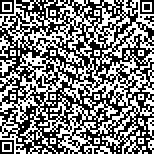| 本文已被:浏览 678次 下载 443次 |

码上扫一扫! |
| 普朗斑岩型铜矿区矿化蚀变特征矿物填图及找矿潜力分析:来自资源一号02D遥感卫星的证据 |
| 赵志芳,张新乐,陈琪,张瑞丝,李文昌,曹晓民 |
|
|
(1. 云南大学地球科学学院, 云南 昆明 650050;
2. 自然资源部三江成矿作用及资源勘查利用重点实验室, 云南 昆明 650050;
3. 云南省国产高分卫星遥感地质工程研究中心, 云南 昆明 650050;
4. 中国地质调查局成都地质调查中心, 四川 成都 610081;
5. 云南省地质调查院, 云南 昆明 650051) |
|
| 摘要: |
| 随着近年来取得重要找矿突破的普朗斑岩型铜矿的规模化开采,进一步摸清首采区外围资源潜力任务紧迫。遥感技术尤其是国产卫星资源一号02D星等高光谱卫星成功发射,为我国高海拔艰苦地区快速精准识别与矿化相关的蚀变矿物提供了可能。针对以往对植被覆盖区高光谱矿物识别有效性方法探索不足,本文选取普朗铜矿区为研究,采用资源一号02D高光谱遥感数据,使用比值植被指数划分植被覆盖区及非植被覆盖区。基于实测波谱,分层次构建了植被覆盖区及非植被覆盖区与普朗铜矿矿化密切相关的绢云母、绿泥石、绿帘石蚀变特征矿物波谱曲线,并采用匹配滤波方法开展了蚀变矿物填图示范应用。野外验证表明:该方法可有效探测普朗斑岩型铜矿外围尤其是首采区东侧植被覆盖区绢云母等蚀变特征矿物分布信息,结果显示普朗首采区东侧具有较大找矿潜力。 |
| 关键词: 资源一号02D星 实测波谱 植被覆盖区与非植被覆盖区 分层次蚀变矿物填图 普朗斑岩型铜矿 |
| DOI:10.19826/j.cnki.1009-3850.2022.01012 |
| 附件 |
| 投稿时间:2021-09-01修订日期:2022-01-16 |
| 基金项目:国家自然科学基金"风化壳淋积型镍矿矿化特征矿物波谱响应及精细化遥感找矿模型研究"(41872251);国家自然科学基金"山地高原斑岩型铜矿矿化蚀变分带遥感弱异常光谱响应及增强"(41462015);国家自然科学基金重点基金项目(92055314) |
|
| Mapping of alteration minerals and prospecting potential analysis of Pulang porphyry copper deposit: Evidence from remote sensing data of Ziyuan-1 02D satellite |
| ZHAO Zhifang, ZHANG Xinle, CHEN Qi, ZHANG Ruisi, LI Wenchang, CAO Xiaomin |
(1. School of Earth Sciences, Yunnan University, Kunming 650500, China;
2. MNR Key Laboratory of Sanjiang Metallogeny and Resources Exploration & Utilization, MNR, Kunming 650051, China;
3. Engineering Research Center of Domestic High-Resolution Satellite Remote Sensing Geology for Universities of Yunnan Province, Kunming 650500, China;
4. Chengdu Center, China Geological Survey, Chengdu 610081, China;
5. Yunnan Institute of Geological survey, Kunming 650051, China) |
| Abstract: |
| With the large-scale mining of the Pulang porphyry copper deposit, which has made an important breakthrough in prospecting in recent years, it is urgent to find further potential resource in the peripheral of the first mining area. Hyperspectral remote sensing technology, especially the successful launch of domestic satellite ZY1-02D hyperspectral satellite, makes it possible to quickly and accurately identify altered minerals related to mineralization in the areas with high altitude and difficult topographic conditions. In view of the inadequate effectiveness of previous hyperspectral mineral identification methods in vegetation areas, this paper selects Pulang mining area as the research area and uses the ZY1-02D hyperspectral remote sensing data to obtain the information of the alteration minerals such as sericite, chlorite and epidote based on the measured spectra. Through the ratio vegetation index, the study area is divided in to vegetation areas and non-vegetation areas, then the corresponding spectra of the alteration minerals are constructed respectively. At the same time, the hyperspectral altered mineral mapping method of Pulang porphyry copper mining area is optimized and established by using the matched filtering method. The field investigation results show that the optimized hierarchical ZY1-02D hyperspectral altered mineral mapping method, which distinguishes vegetation area and non-vegetation area, can effectively detect the alteration characteristic mineral information in the periphery of Pulang porphyry copper mining area, especially in the vegetation covered area on the east side of the first mining area. The field data further reveals that the east part of Pulang first mining area has great prospecting potential. |
| Key words: ZY1-02D satellite ground measured spectra non-vegetation area and vegetation area hierarchical hyperspectral altered mineral mapping Pulang porphyry copper deposit |